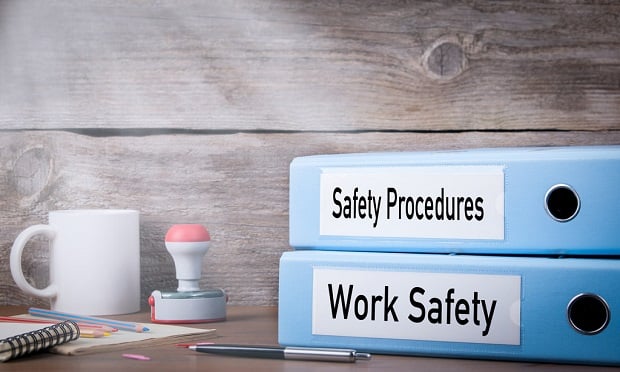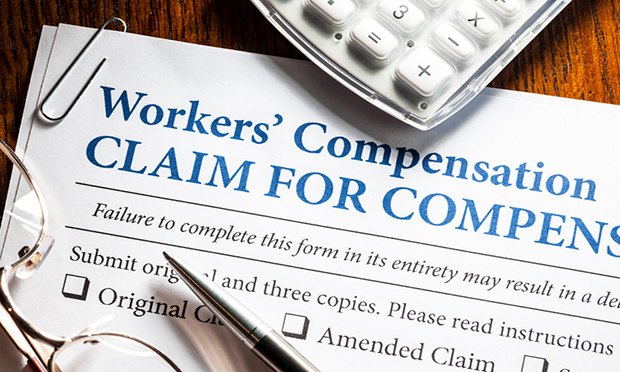The U.S. economy is improving and unemployment rates are nearly back to pre-recessionlevels.
|This economic upswing has intensified an already competitivelabor market where job vacancies and the inability to hire quicklycan have negative business impacts, such as lostproductivity and lower-quality work.
|Although many factors motivate job seekers, small businesses mayespecially feel the labor pinch because they likely can't competewith big-business perks and benefits.
|However, a new survey of small business employees conducted by EMPLOYERSreveals that small business owners may be underselling an importantfactor that could give them the edge when recruiting new workers: asafe workplace. Surprisingly, small business employees saidworkplace safety was more important to them than other things, suchas the quality of potential coworkers and opportunities forgrowth.
|Small businesses employ nearly half of the U.S. workforce, and intoday's tight labor market, it's important that employers recognizethat a safe working environment is a top priority for currentemployees. It's also key to attracting and retaining newworkers.
|Here are six things business owners can do to improve safety inthe workplace:
|1. Create a culture of safety
A safety culture starts at the top. Business owners and managersneed to commit to maintaining a safe working environment and modelthe behavior they wish to see in their staff. A safety culture isthe way people think, feel and interact in relation to safety. It'smore than just policies and procedures; it's woven into abusiness's core values. Small business owners should demonstratetheir commitment to safety with all employees, from discussing itduring the interview process to keeping it top of mind with staffby conducting regular safety meetings and training.
|Small business owners should demonstrate their commitment tosafety with all employees, from discussing it during the interviewprocess to keeping it top of mind with staff by conducting regularsafety meetings and training.
|Related: Atlanta Hawk: How Cherokee County, Ga.'s HRmanager created a culture of safety
|2. Identify and assess potential hazards
According to the Occupational Safety and Health Administration(OSHA), one of the root causes of workplace injuries and illnessesis the failure to recognize potential hazards. An important part ofcreating an effective safety and health program is taking the timeto identify and assess potential safety risks. Steps include:
- Asking employees to share their safety concerns. Front-linestaff may witness potential risks that back of house staff ormanagement may fail to notice;
- Conducting a walkthrough to identify new or recurring hazards,like spilled liquids, frayed electrical cords or open containers ofhazardous chemicals;
- Investigating recent injuries, illnesses or “close calls” toidentify the root cause of the hazard and what steps can be orshould have been taken to prevent an incident.
- Fixing “on the spot” hazards as soon as they're discovered,such as tripping hazards or wet flooring.
Related: 10 ways to reduce slips, trips and falls inyour business
|3. Develop a safety and health program
Work-related injuries and illnesses can lead to increased costsfor businesses, including potentially higher workers' compensationinsurance premiums and decreased productivity. According to OSHA,an effective safety and health program can save a business owner$4 to $6 for every $1 invested. It can alsoreduce injuries and illnesses, improve employee morale and increaseproductivity. The safety and health program should be customized tofit the company size and industry and blend with currentoperations.
|Related: Keeping aging workers safe on thejob
|
(Photo: iStock)
|4. Provide safety and health training andeducation
The EMPLOYERS survey also revealed that 17% of small businessemployees say they never receive workplace safetytraining. That number is even higher — 25% — for micro-businesses,or those with nine or fewer employees. Smaller businesses may nothave the luxury of dedicated in-house risk management resources. Infact, because many small business owners often wear many hats, frommanager to bookkeeper to safety trainer, it can be difficult tomake safety a priority. But the impact of just one seriousworkplace injury can be catastrophic for the injured employee aswell as the family, coworkers and employer.
|Business owners and managers should make sure to review trainingprocedures with all new employees, especially less-experiencedworkers, and provide regular refresher courses throughout the year.It's important to remind employees not only what the company'ssafety requirements are, but also why they need to be followed.Additionally, managers should involve staff in finding solutionsand establishing procedures to help prevent future hazards.
|Related: Nations Roof: Workers' comp reaches a newlevel
|5. Comply with OSHA safety signageregulations
The EMPLOYERS survey found that 40% of employees say theiremployer doesn't display OSHA signage or that they don't know whereto find it. OSHA requires that businesses prominently display its“Job Safety and Health: It's the Law” poster, whichinforms employees of their rights under the Occupational Safety andHealth Act. Additionally, OSHA regulations specify that caution signs must be used towarn against potential hazards or unsafe practices. OSHA alsoregulates the safety and design of the signs.
|Related: Butterball's winning workers' comp journey— from farm to table
|6. Enforce and evaluate
An important part of making safety a top priority is thatefforts are never “done.” Employers should be vigilant about makingsure staff follow policies and procedures. Managers shouldroutinely review safety and health programs and make adjustments asnew hazards are identified, then be sure all staff members areinformed of and understand the additions and updates.
|By making safety a key component of business operations,employers can realize many benefits, including increasedproductivity, improved employee morale and reduced costs associatedwith workers' compensation claims. A safe workplace may also tipthe scales for employees who are evaluating competing joboffers.
|Related: Workplace safety and weed atwork
|David Quezada is vice president of loss control service,for Reno, Nevada-based Employers Holdings Inc., a small-business and workers'compensation insurer. He can be reached at [email protected].
Want to continue reading?
Become a Free PropertyCasualty360 Digital Reader
Your access to unlimited PropertyCasualty360 content isn’t changing.
Once you are an ALM digital member, you’ll receive:
- All PropertyCasualty360.com news coverage, best practices, and in-depth analysis.
- Educational webcasts, resources from industry leaders, and informative newsletters.
- Other award-winning websites including BenefitsPRO.com and ThinkAdvisor.com.
Already have an account? Sign In






